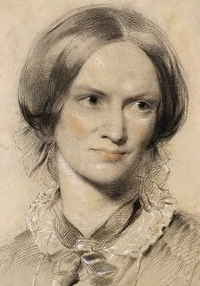Charlotte Brontë

The author of Jane Eyre was Charlotte Brontë, the eldest of the world-famous Brontë sisters (pronounced BRON-tee, not bron-TAY). Her life was marked by personal loss, fierce intellectual ambition, and an enduring literary legacy.
Early Life and Family
Charlotte was born in Thornton, West Yorkshire, on 21st April 1816 – the third of six children to Patrick Brontë, an Anglican clergyman of Irish descent, and Maria Branwell. In 1820, the family moved to the isolated village of Haworth, nestled on the Yorkshire moors – a landscape that would leave a lasting imprint on Charlotte's imagination.
Tragedy struck early in Charlotte's life. In 1821, her mother died of cancer, leaving the children to be raised by their stern aunt, Elizabeth Branwell. In 1824, Charlotte and her older sisters, Maria and Elizabeth, were sent to the Clergy Daughters' School at Cowan Bridge. Harsh conditions and poor treatment at the school deeply affected them. Maria and Elizabeth became seriously ill and died shortly after returning home. The experience would later be immortalised in Jane Eyre through the depiction of the infamous Lowood School.
Creative Development
The remaining Brontë siblings – Charlotte, Emily, Anne, and their brother Branwell – found solace in literature and storytelling. They created elaborate imaginary worlds, such as Angria and Gondal, writing poems, plays, and stories to populate them. These early creative experiments honed their narrative skills and fostered a shared literary bond.
Charlotte worked intermittently as a teacher and governess – professions she found stifling but necessary. In 1842, she and Emily travelled to Brussels to study languages at the Pensionnat Heger. Charlotte's time there, particularly her unrequited attachment to her teacher Constantin Heger, profoundly influenced her later work, especially her novel Villette.
Literary Career

In 1846, Charlotte, Emily, and Anne published a joint collection of poetry under the pseudonyms Currer, Ellis, and Acton Bell, respectively. Though it received little attention, it marked the beginning of their literary careers.
Charlotte's first novel, The Professor, was rejected by multiple publishers. Undeterred, she began work on Jane Eyre, which was published in 1847 to immediate critical and commercial success. Written in the first person and centered on a plain, fiercely independent heroine, the novel was considered daring for its emotional intensity, social critique, and feminist undertones.
Following Jane Eyre, Charlotte wrote Shirley (1849), a novel set during the industrial depression and Luddite uprisings, reflecting her concern with the changing social and economic landscape. Her final completed novel, Villette (1853), drew heavily on her personal experiences in Brussels and is often considered her most sophisticated and introspective work.
Personal Loss and Later Life
The years following Charlotte's literary success were shadowed by profound loss. In 1848 and 1849, Charlotte buried her three remaining siblings in quick succession – Branwell to alcoholism and opium, Emily to tuberculosis, and Anne soon after, also from tuberculosis. These tragedies left Charlotte alone at Haworth with her ageing father.
In 1854, she married Arthur Bell Nicholls, her father's curate. Though the marriage appeared happy, it was short-lived. Charlotte died on 31st March, 1855, at the age of 38, officially from tuberculosis but possibly from complications related to pregnancy and hyperemesis gravidarum.
Legacy
Charlotte Brontë's novels are celebrated for their psychological depth, powerful female protagonists, and exploration of identity, morality, and social justice. Her work challenged the conventions of Victorian literature and helped pave the way for more realistic, emotionally nuanced fiction.
Today, Charlotte remains a towering figure in English literature. Jane Eyre continues to be widely read and studied, a testament to the enduring power of her voice and vision.
